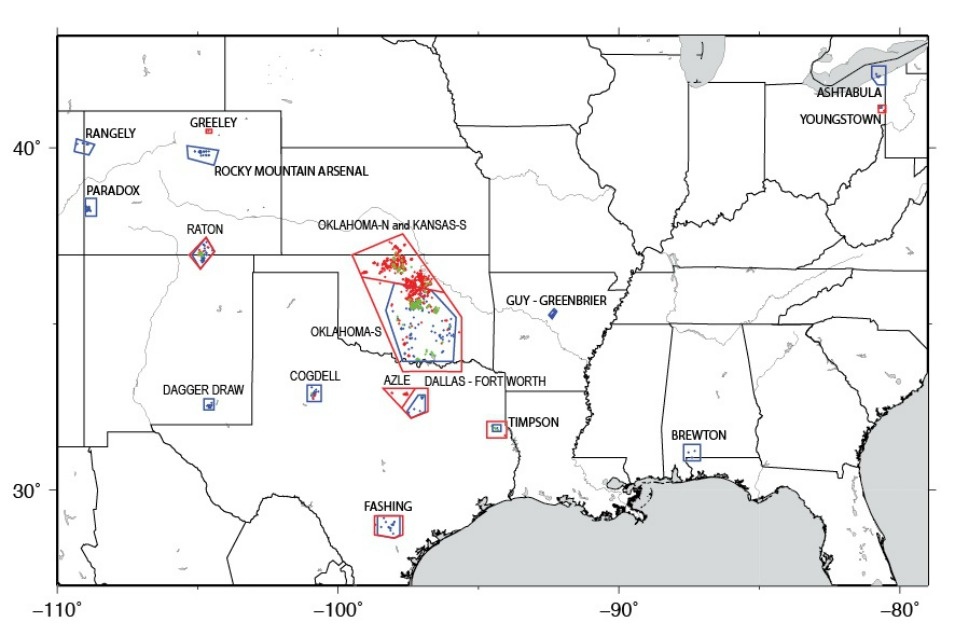Fracking-induced earthquakes highlighted in new USGS map

USGS research has identified 17 areas in the central and eastern United States with increased rates of induced seismicity. (Map by USGS. Click on it to see a larger version.)
By Lauren McCauley, Common Dreams
The U.S. Geological Survey on Thursday released a landmark new study and map highlighting the location and frequency of earthquakes thought to be caused by human activities such as drilling or hydraulic fracturing, or fracking.
In a statement, the USGS said that the sharp increase in earthquake activity in the central and eastern United States since 2009 "is linked to industrial operations that dispose of wastewater by injecting it into deep wells."
The study is the first comprehensive assessment that includes what the USGS calls "induced" earthquakes into its forecast maps, which detail the likelihood of an earthquake occurring within a 50-year period. The maps are used for building codes, insurance rates, and emergency preparedness plans, among other applications.
"These earthquakes are occurring at a higher rate than ever before and pose a much greater risk to people living nearby," said Mark Petersen, Chief of the USGS National Seismic Hazard Modeling Project.
The new map features the states of Alabama, Arkansas, Colorado, Kansas, New Mexico, Ohio, Oklahoma, and Texas, with Oklahoma displaying by far the greatest number of man-made earthquakes. All of the areas highlighted on the map "are located near deep fluid injection wells or other industrial activities capable of inducing earthquakes," according to the study.
Oklahoma had 585 earthquakes of magnitude 3 or greater in 2014 alone, and is on track to have more than 800 this year, according to the Oklahoma Geological Survey. Before 2009, the state averaged only one to three a year whereas now there is an average of 2.5 such quakes each day.
On Tuesday, scientists at the Oklahoma Geological Survey issued a statement (pdf) saying it is "very likely that the majority of recent earthquakes, particularly those in central and north-central Oklahoma are triggered by the injection of produced water in disposal wells."
The practice of fracking releases gas and oil trapped in deep-rock formations by injecting a combination of water, chemicals, and sand into the bedrock. The toxic byproduct of fracking is later injected deep into the ground via disposal wells, which scientists say are likely causing these quakes.
Also Tuesday, a study published in the journal Nature Communications concluded that a series of small 27 earthquakes that rattled a small Texas town were likely linked to drilling operations at the nearby Barrett Shale natural gas formation.
Tags
Common Dreams
Common Dreams is a nonprofit independent newscenter that has been providing breaking news and views for the progressive community since 1997.
